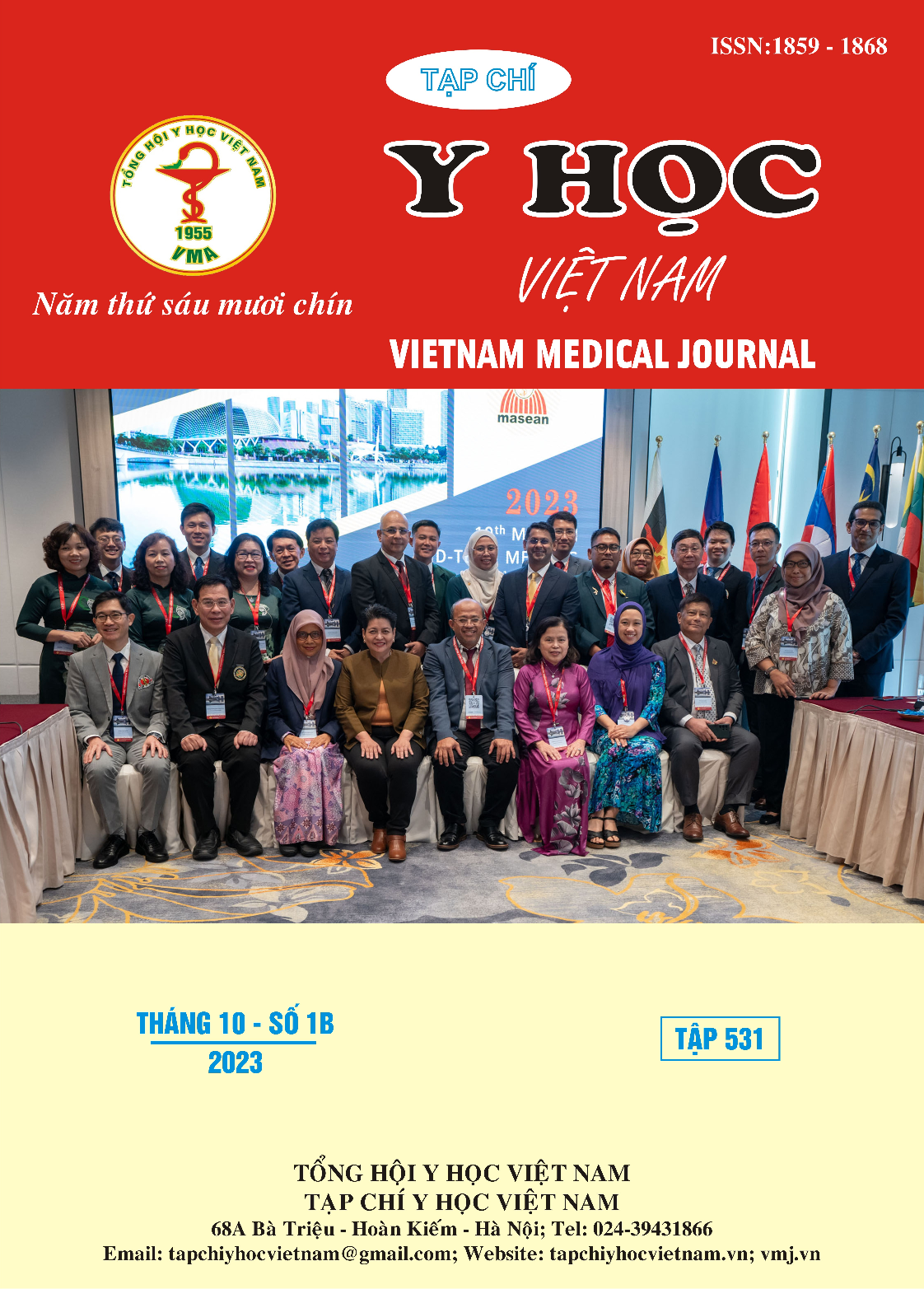TO EVALUATION THE TREATMENT OF INTERTROCHANTERIC FRACTURE BY PFNA ABOUT ANATOMIC RESTORATION AND REHABILITATION
Main Article Content
Abstract
Purpose: The study was conducted to evaluate the treatment of intertrochanteric fracture by PFNA about anatomic restoration and rehabilitation. Method: The patients with intertrochanteric fractures who were over 17 years old were included in this study. These patients were treated by PFNA. Results: From March 2018 to March 2019, there were 36 patients undergone this procedure. The female: male ratio was 24: 12. Mean age was 72,21 ± 6,35. Mean time follow-up was 14 months. Conclusions: Intertrochanteric fracture were mostly seen in adultly patients. The PFNA brings good results in anatomic reduction and rehabilitations.
Article Details
Keywords
Intertrochanteric fracture, intramedullary nail, PFNA, depuy synthes
References
2. Nguyễn Sỹ Lập (2018), “Đánh giá kết quả điều trị gãy liên mấu chuyển xương đùi không vững người lớn bằng kết hợp xương đinh Gamma 3 với đường mổ ít xâm lấn”, Luận văn chuyên khoa câp II, TrườngĐại học Y Khoa Phạm Ngọc Thạch.
3. Nguyễn Anh Tuấn (2019), Đánh giá kết quả điều trị gãy liên mấu chuyển xương đùi bằng đinh Gamma 3 tại bệnh viện Chấn thương chỉnh hình, luận văn chuyên khoa cấp II, Đại học Y khoa Phạm Ngọc Thạch.
4. Adam P. (2014), “Treatment of recent trochanteric fracture in adults”, Orthop Trauma Surg Res, Vol 100, p. 75-83.
5. Adrian Todor, Adina Pojar, Dan L. (2013), “Minimally invasive treatment of trochanteric fractures with intrameduullary nails”, Clujul Medical, Vol 86(1), p. 40-42.
6. Domingo L.J., Cecilia D., Herrera A., Resines C. (2001), “Trochanteric fractures treated with a proximal femoral nail”, Int Orthop, 25, p. 298 – 301.
7. Lee Y.K., Chung C.Y., Park M.S., et al (2013), “Intramedullary nail versus extramedullary plate fixation for unstable intetrochanteric fracture: decision analysis”, Arch Orthop Trauma Surg, Vol 133(7), p. 961-68
8. Radcliff T.A., Regan E., Cowper R.D., et al (2012), “Increased use of intramedullary nails for intertrochanteric proximal fermoral fracture in Veterans Affairs hospitals: A Comparative effectiveness study”, J Bone joint Sur, Am, Vol 94(9), p. 833-40.
9. Ramnarayan D., Vanchi P.K., Mohan K.M. (2015), “Intramedullary or extramedullary fixation for unstable intertrochanteric fracture: A prospective randomized controlled trial”, J Bone Joint Surg Am,Vol 97(23), p. 1905-12.
10. Steinberg E.L., Haidukewych G.J., Israel T.A., et al (2002), “Treatment of reverse obliquity fractures of the Intertrochanteric region of the femur”, J.Bone Joint Surg Am., Vol 84, p. 869-870.


